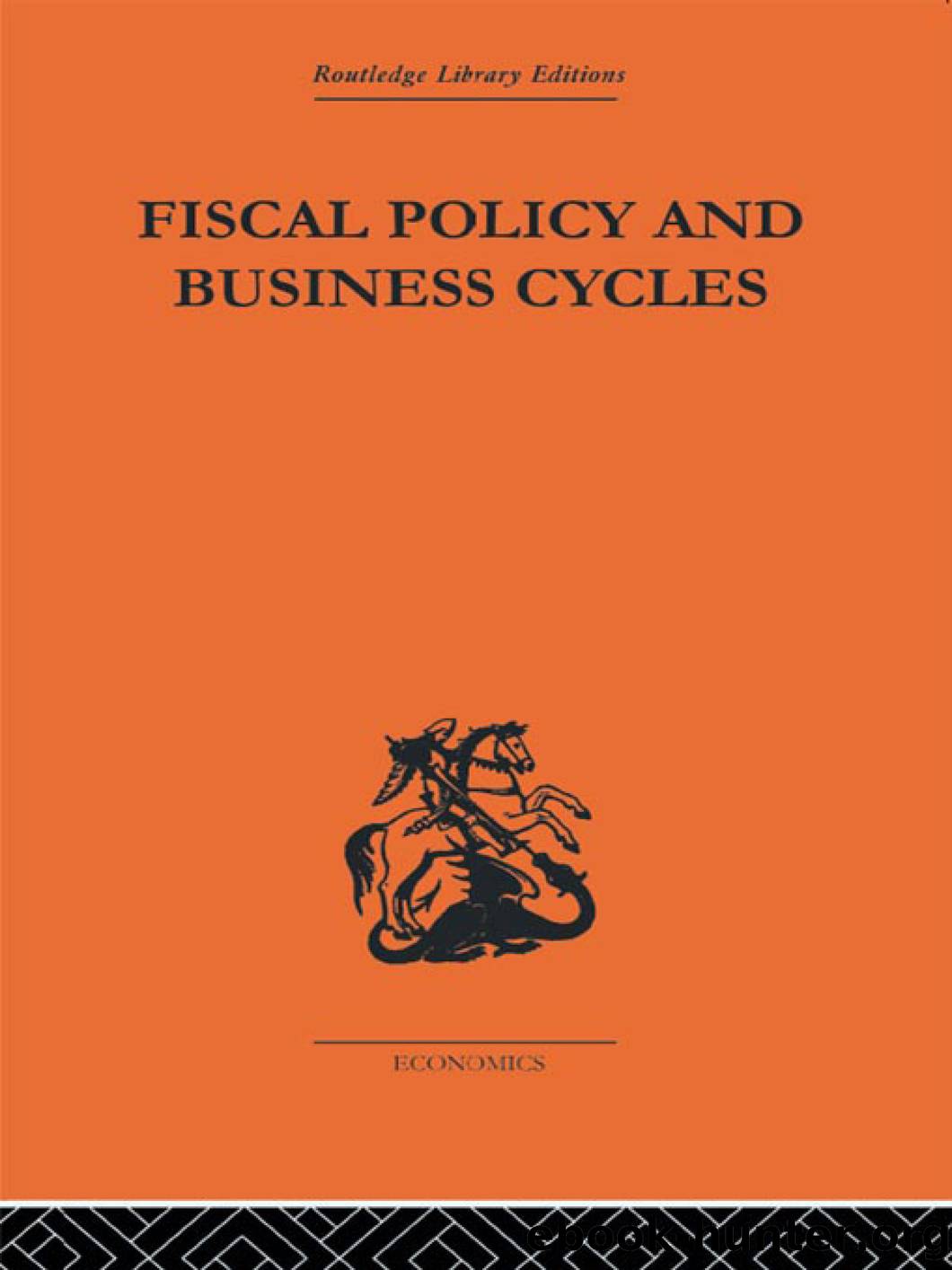Fiscal Policy and Business Cycles by Hansen Alvin H.;Alvin H.;

Author:Hansen, Alvin H.;Alvin, H.; [Hansen, Alvin H]
Language: eng
Format: epub
Publisher: Taylor & Francis Group
Published: 2003-08-15T00:00:00+00:00
Stability of Consumption-income Pattern
The question is frequently asked: Why lay so much emphasis upon investment per se? Why not expand consumption? This is a perfectly sensible question. Indeed, it may well be that we ought to encourage consumption. But the fact is that the ratio of consumption to income is not easily increased. Indeed, there is reason to believe that we are right in the midst of institutional developmentsâstructural changes in our economyâwhich tend, for a time at least, to lower the ratio of consumption to income and to increase the proportion of income saved.
Consider, first, the great development of life insuranceâa development in itself thoroughly sound and certainly deserving of public encouragement and support. Life insurance has grown to gigantic proportions in a single generation. In 1880 the assets of life insurance companies amounted to less than $500 millions. Thirty years later in 1910, they amounted to only $3.9 billions. Then came the period of rapid growth. By 1940 the assets amounted to over $30 billions. In 1937 the income of life insurance companies from premiums and investments amounted to about $5.3. Benefit payments were $2.4 and expense outlays $1.0 billions, leaving around $1.9 billions annually for new investment.
Eventually life insurance will reach financial maturity and will pay out year by year, in benefits and costs, amounts equal to premium receipts and income from investments. When this point is reached, individuals will be able to save by the life insurance method without such individual savings resulting in any net aggregate savings. But as long as life insurance is in process of rapid growth, large reserves are being built up and an annual flow of quasi-compulsory saving is effected. We are currently just at the height of this development, and this is a factor tending to raise the savings-income ratio.
It is a striking fact that just at the point when life insurance savings were accumulating at the maximum rate a vast social insurance program was introduced, based largely on the private insurance principle of accumulation of reserves. Some modifications were made in 1939 in the original plan, reducing materially the probable future size of the old-age reserve account. Nevertheless, large accumulations have already been made and are currently in prospect for some years to come both in the Unemployment Trust Fund and in the Old Age and Survivorâs Insurance Trust Fund. In the four years 1937 to 1940, inclusive, the accumulations in these funds proceeded at an average annual rate of $1.0 billions, the accumulations at the end of 1940 amounting to $4.0 billions. Thus, on top of annual life insurance savings there has suddenly been injected this important new factor adding to the flow of savings and thereby tending to reduce the ratio of consumption to income.7
7 It is, of course, impossible to predict the rate at which these funds will accumulate in future. The act relating to both unemployment compensation and old-age and survivorâs insurance is likely to be further amended with respect to contributions, benefit payments, and coverage.
Download
This site does not store any files on its server. We only index and link to content provided by other sites. Please contact the content providers to delete copyright contents if any and email us, we'll remove relevant links or contents immediately.
The Brazilian Economy since the Great Financial Crisis of 20072008 by Philip Arestis Carolina Troncoso Baltar & Daniela Magalhães Prates(105684)
International Integration of the Brazilian Economy by Elias C. Grivoyannis(75473)
The Art of Coaching by Elena Aguilar(52201)
Flexible Working by Dale Gemma;(23213)
How to Stop Living Paycheck to Paycheck by Avery Breyer(19568)
The Acquirer's Multiple: How the Billionaire Contrarians of Deep Value Beat the Market by Tobias Carlisle(12113)
Thinking, Fast and Slow by Kahneman Daniel(11801)
The Radium Girls by Kate Moore(11626)
The Art of Thinking Clearly by Rolf Dobelli(9923)
Hit Refresh by Satya Nadella(8863)
The Compound Effect by Darren Hardy(8523)
Atomic Habits: Tiny Changes, Remarkable Results by James Clear(8054)
Tools of Titans by Timothy Ferriss(7822)
Turbulence by E. J. Noyes(7708)
Change Your Questions, Change Your Life by Marilee Adams(7384)
A Court of Wings and Ruin by Sarah J. Maas(7271)
Nudge - Improving Decisions about Health, Wealth, and Happiness by Thaler Sunstein(7250)
How to Be a Bawse: A Guide to Conquering Life by Lilly Singh(7160)
Win Bigly by Scott Adams(6831)
